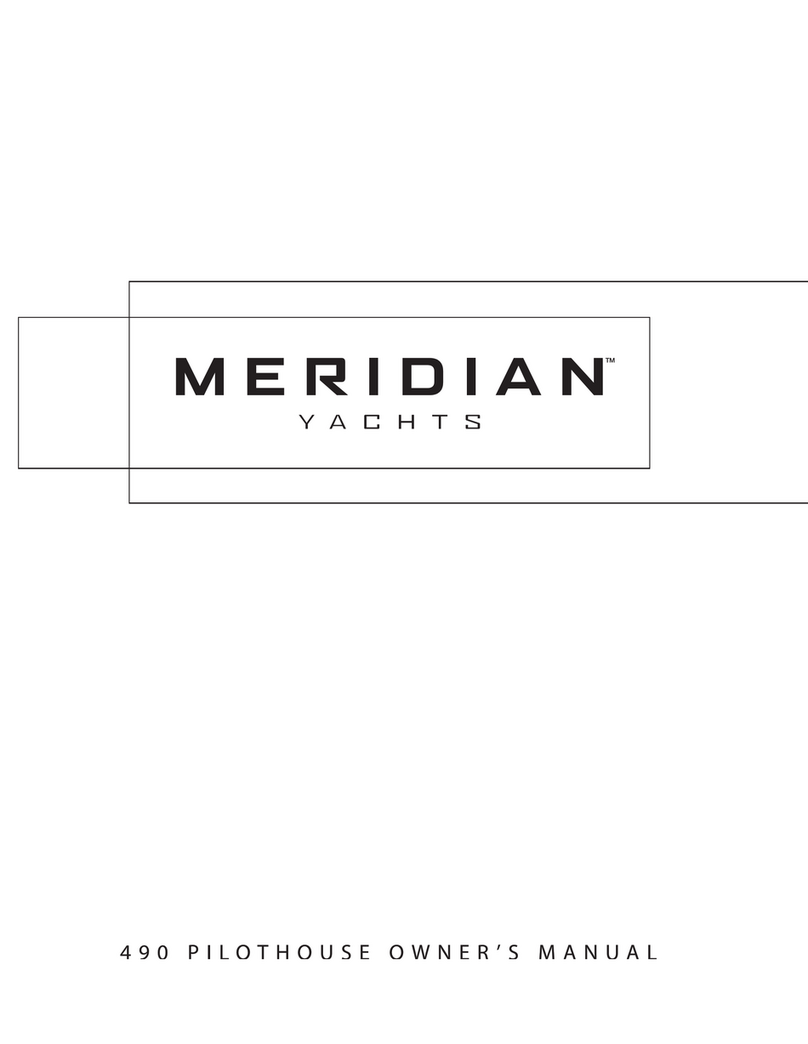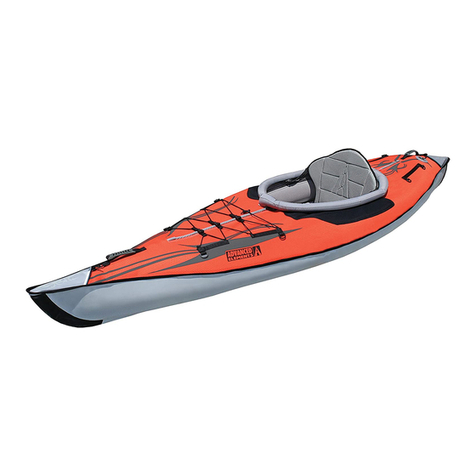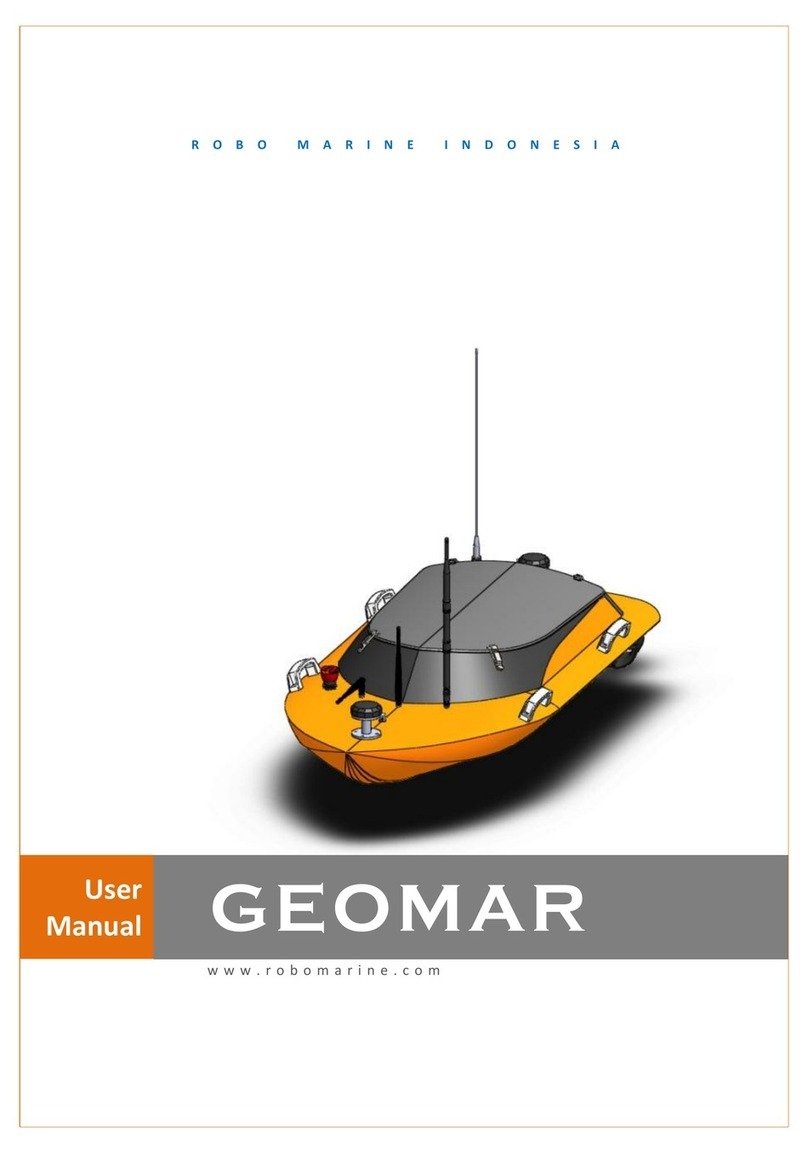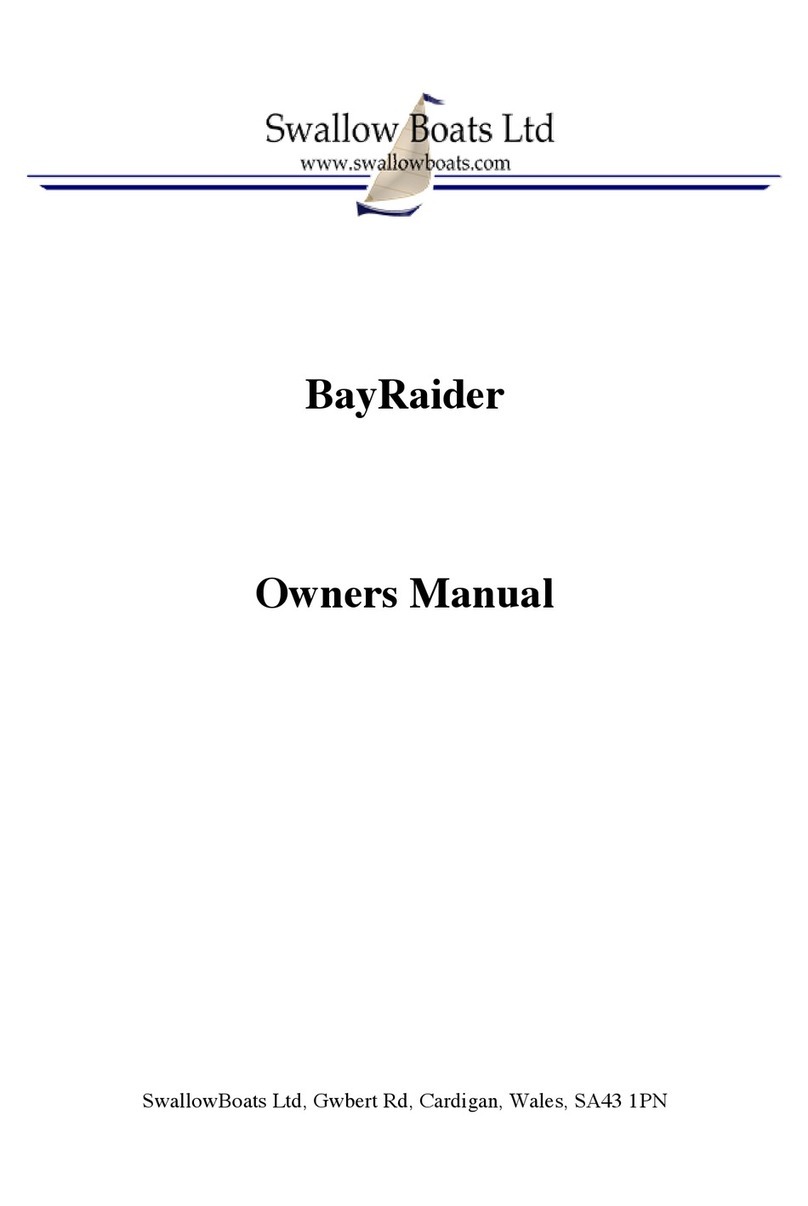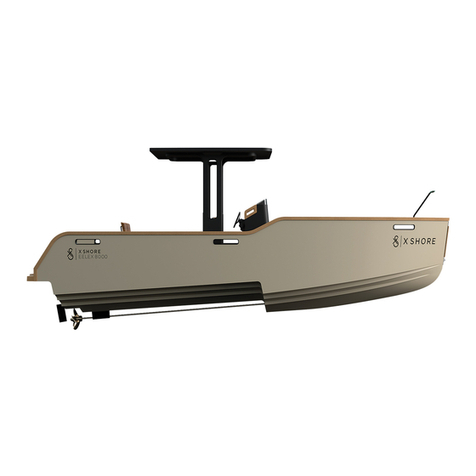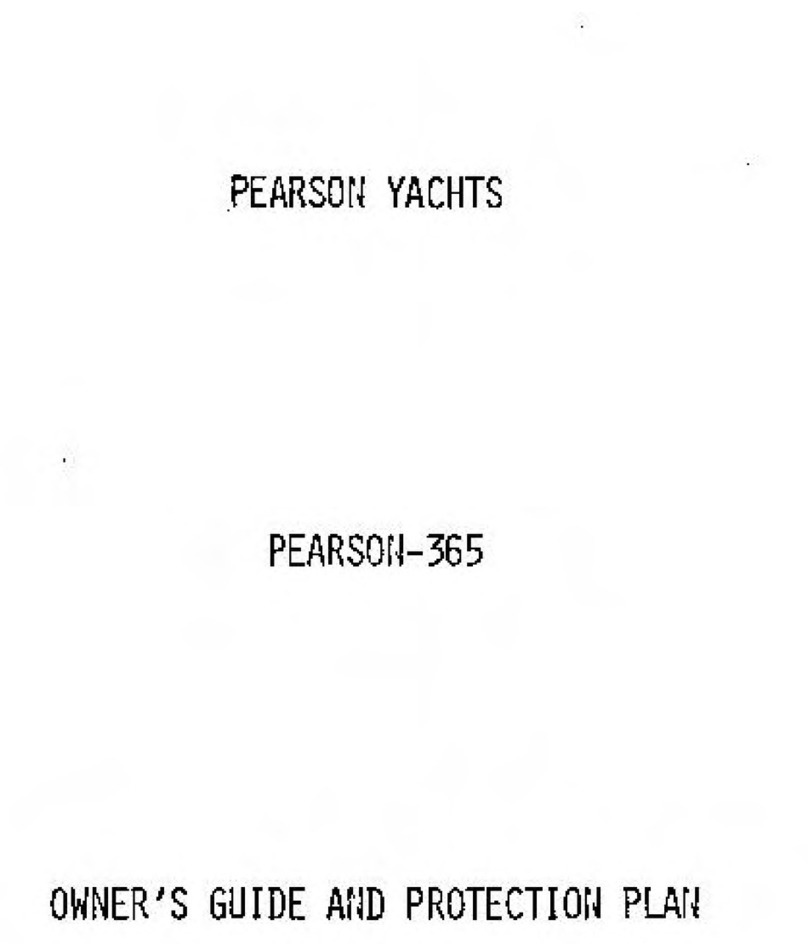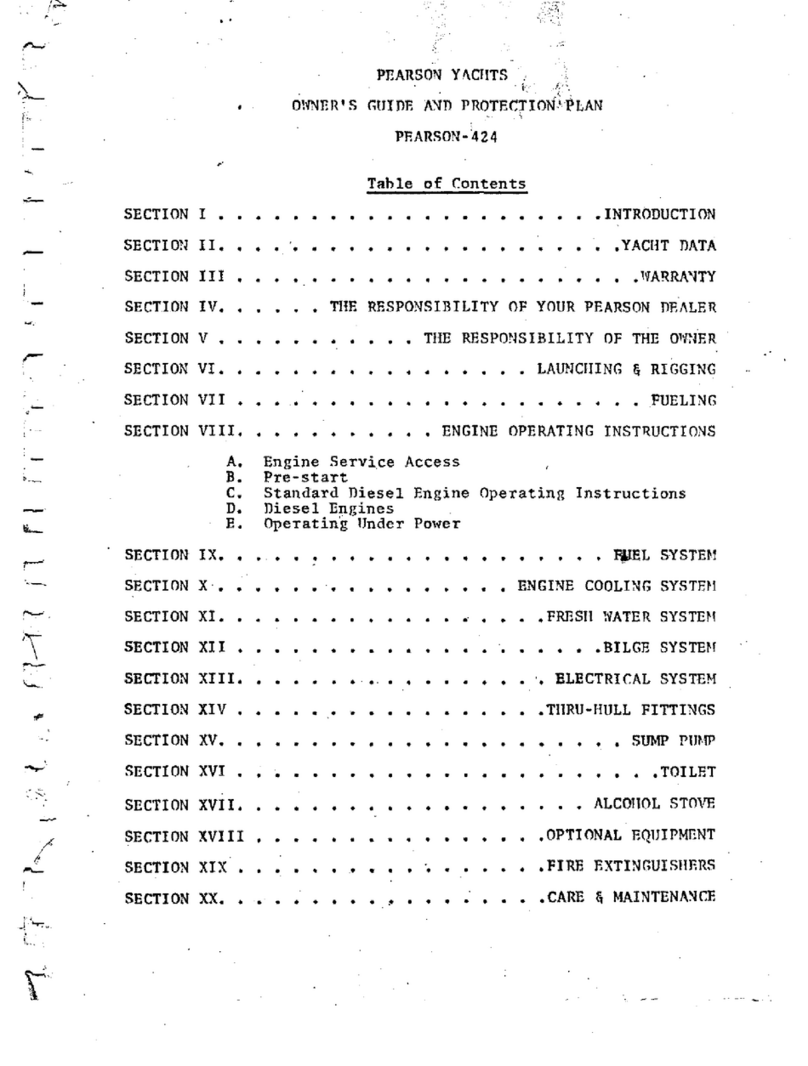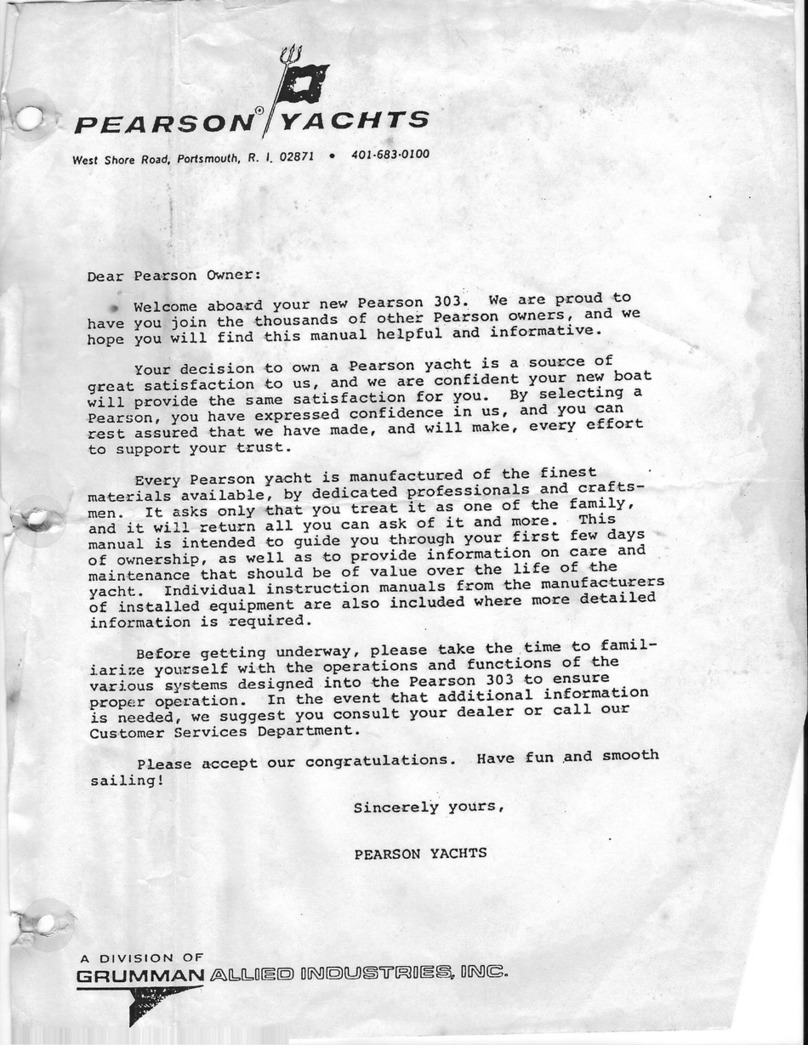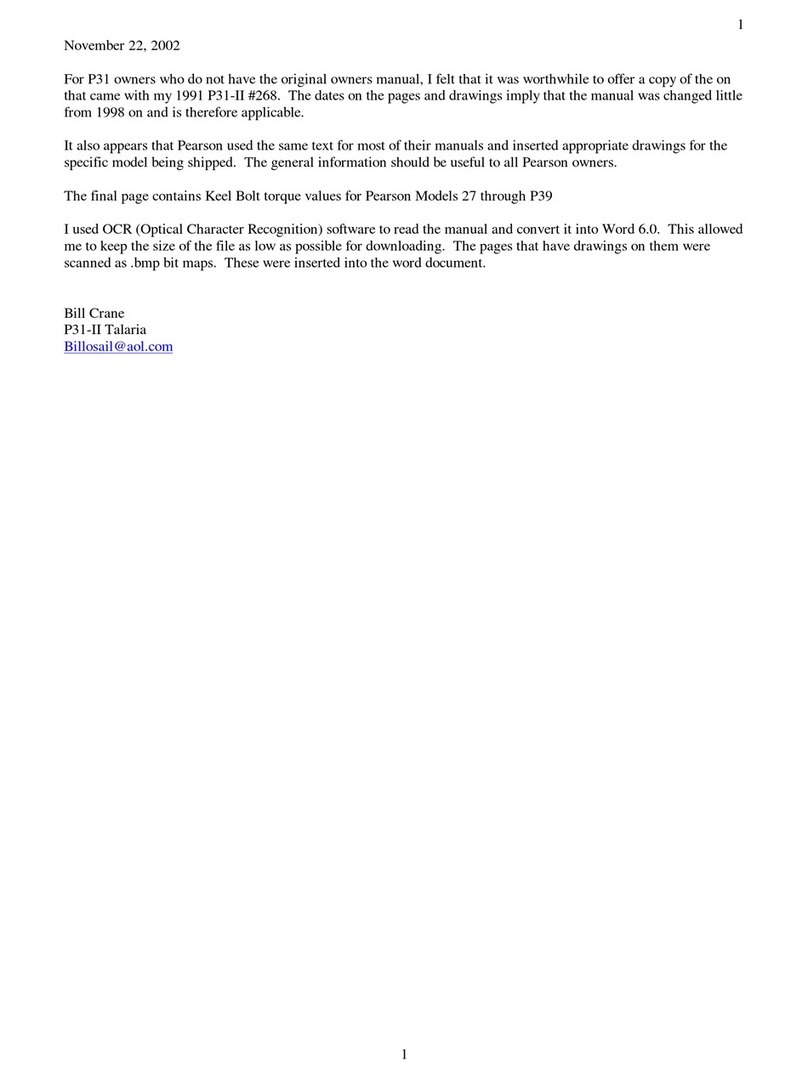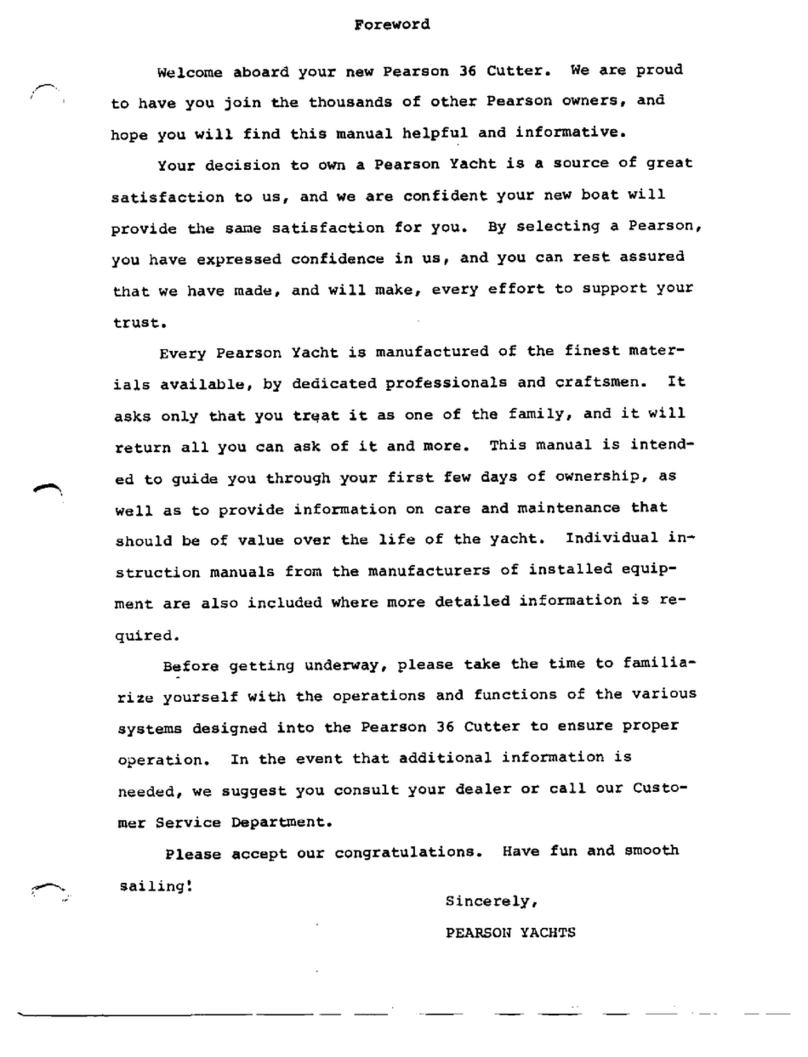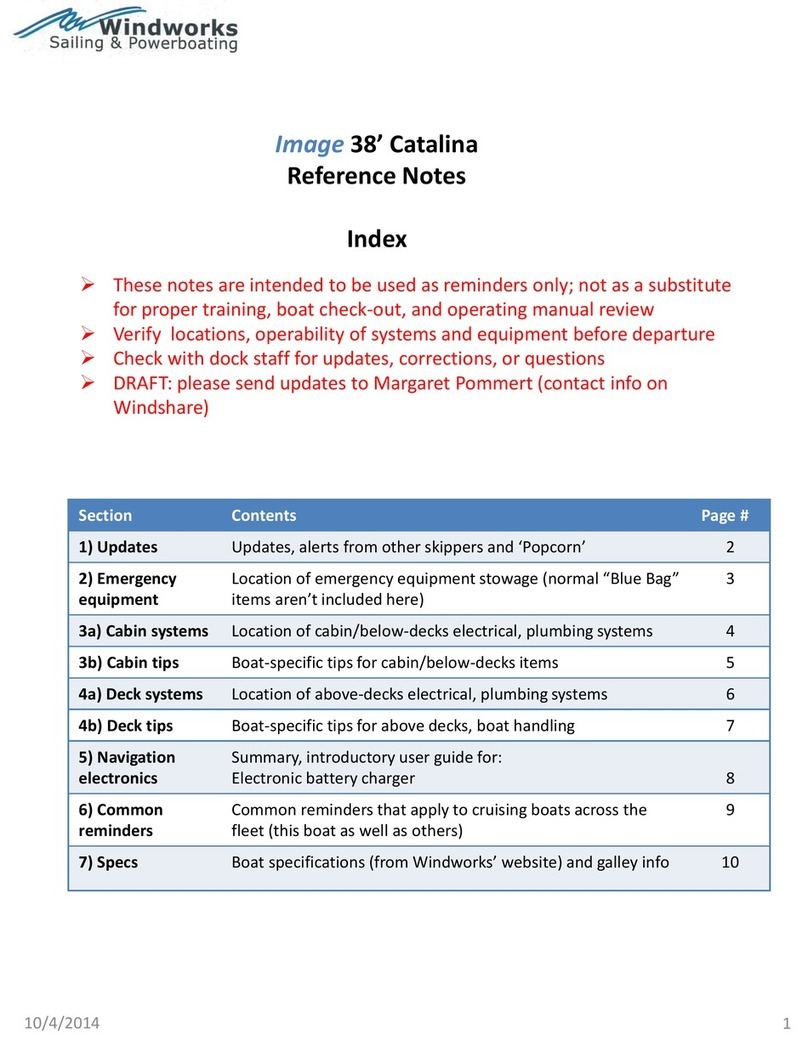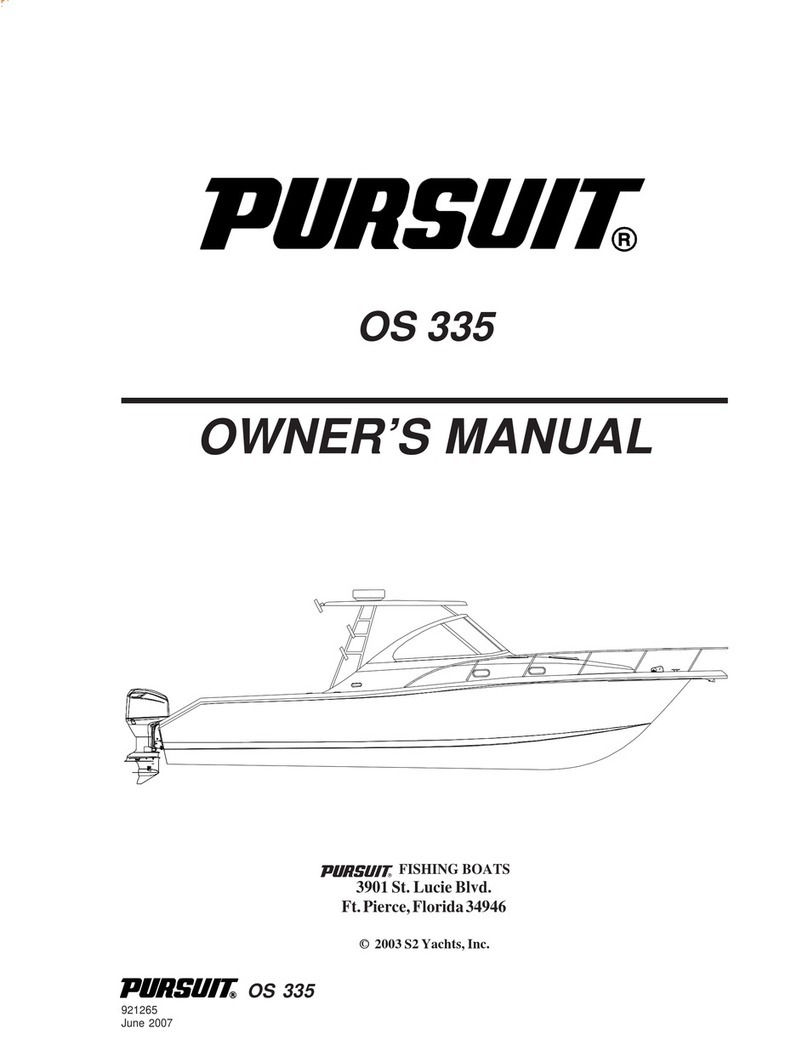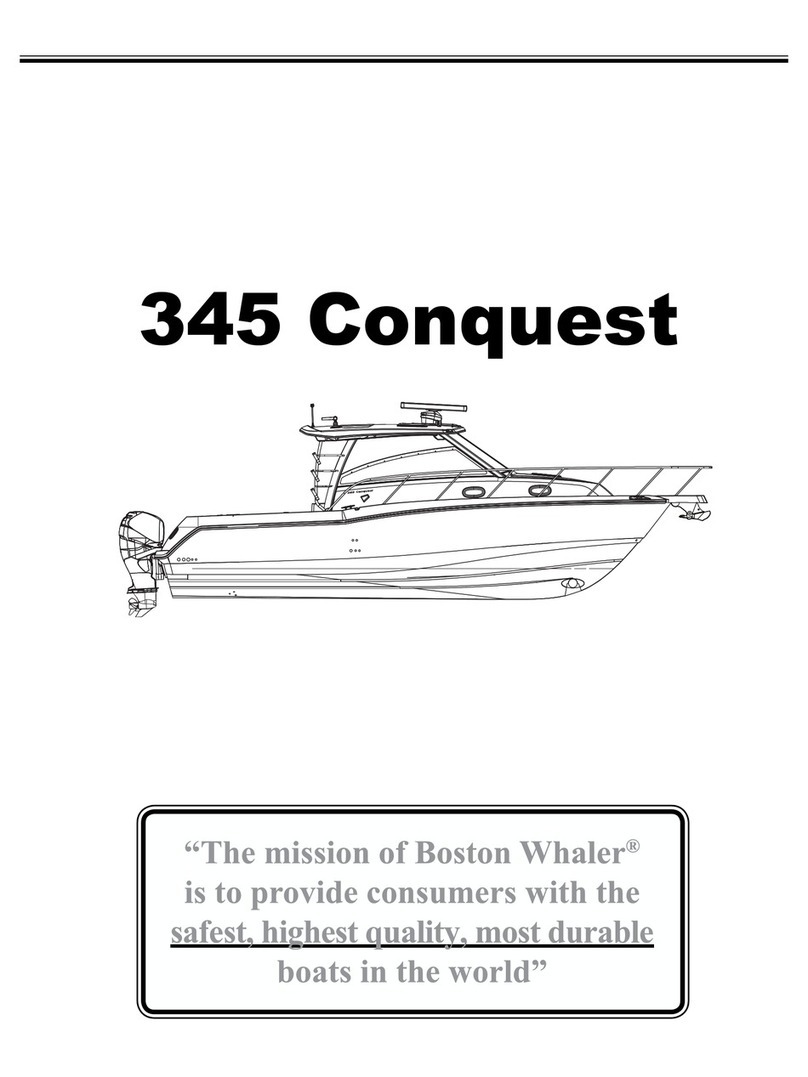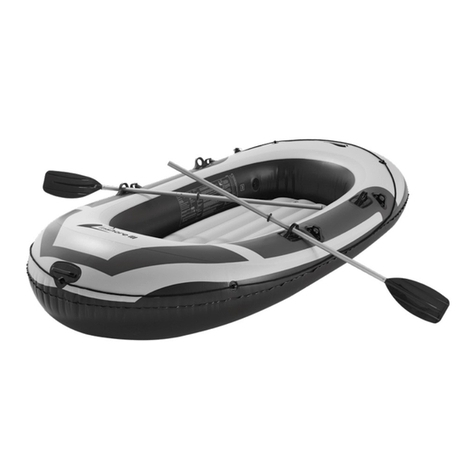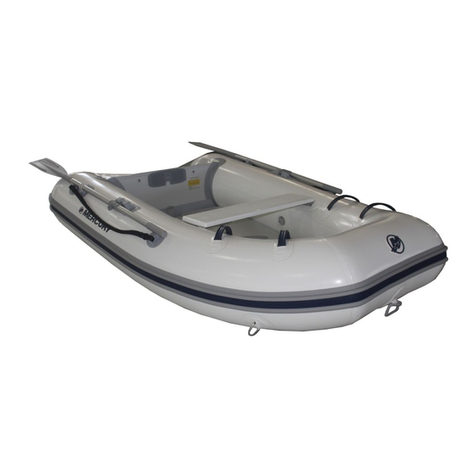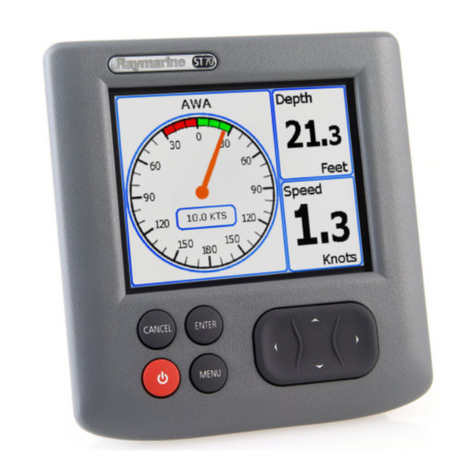
Pearson 323 Owners Manual (1978 model year) Page 10 of 38
PEARSON YACHTS
OWNER'S GUIDE AND PROTECTION PLAN
PEARSON-323
SECTION VI: LAUNCHING & RIGGING
Your Pearson dealer is best equipped to launch and rig your boat. His
knowledge and experience will insure that everything will be as it
should prior to delivery. .
Notes on Launching: Seacocks - Before launching, close all seacocks
on both intake and discharge lines. After launching, open all
seacocks and check for watertight integrity.
Shaft Alignment - Check for proper engine and V-drive shaft alignment
after the boat has been rigged, tuned and equipped. A boat is liable
to "settle" slightly after she is in her natural element.
To adjust the standing rigging, simply remove the cotter pins from
the turnbuckles and turn the barrels clockwise to tighten,
counterclockwise to loosen. Be sure that only the barrel turns, not
the barrel and the shroud. Sometimes it may be necessary to grip the
shroud to prevent this occurrence.
Normal adjustment calls for a taut headstay, backstay and upper
shrouds. The lower shrouds should be sufficiently taut to prevent
movement of the mast at the spreaders when sailing.
Final adjustment may vary according to the cut of your sails and prevailing
wind conditions in your area.
Anchor Roller Fitting: The primary function of the anchor roller is
to provide anchor stowage and ease of handling when raising or
lowering the anchor.
CAUTION: Never use the anchor roller when breaking the anchor out.
For this purpose, lead the anchor rode directly from one
of the bow chocks to a bow cleat. Once the anchor is free,
it can be hoisted using the anchor roller.
When anchored in heavy weather, the anchor rode should lead through a
bow chock, not the anchor roller.
When stowing the anchor on the sprit, lash it securely in place at
the shank. If heavy seas are expected, remove the anchor from the
sprit and stow it in the foredeck recessed anchor well.

